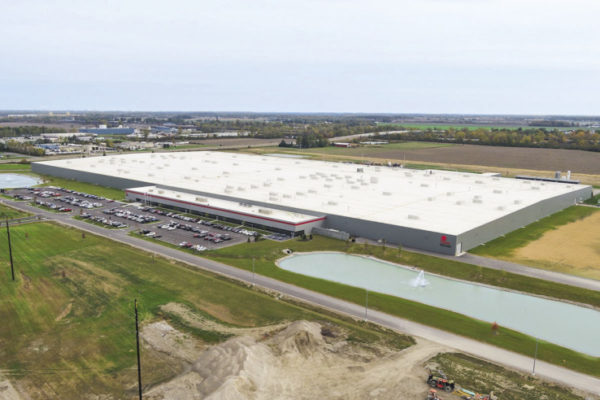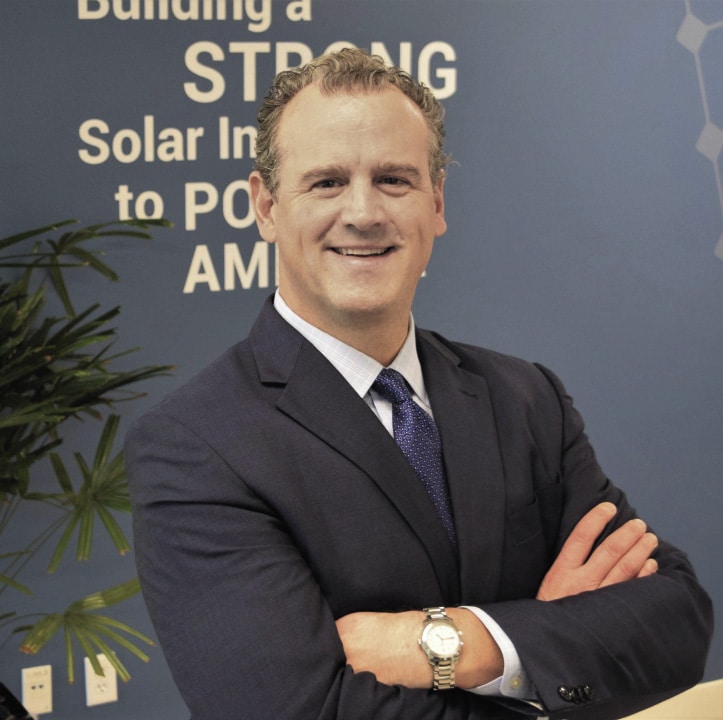It was last August when the U.S. solar industry’s biggest trade group first became aware that allegations of forced labor in the Xinjiang region of China could end up being a supply chain issue. “There was no direct link (to solar), but we recognized a lot of concerns,” recalled John Smirnow, general counsel and market strategy VP for the Solar Energy Industries Association (SEIA), which has members representing a broad cross-section of the U.S. solar industry. Smirnow and his colleagues at SEIA were monitoring news coverage, along with testimony being given to the U.S. Congress related to HR 6210 – the Uighur Forced Labor Prevention Act.
That bill would have barred U.S. companies from importing a range of goods from the Xinjiang region unless companies could demonstrate to U.S. customs officials that no forced, penal, or indentured labor was used. The bill passed the Democrat-controlled House, but stalled in the Senate, which at the time was controlled by Republicans.
“It was clear that Congress was taking the issue seriously,” Smirnow said. Awareness of the forced labor allegations rose within the industry, and by early February, SEIA released a pledge signed by 175 member companies that expressed opposition to forced labor in the solar supply chain. The number of signatory companies has since grown to around 220.
“The solar industry needs to diversify its supply chain,” Smirnow explained. That realization has only grown as polysilicon production rapidly expands, not only in the Xinjiang region, but across other parts of China.
Polysilicon, wafers
Around two-thirds of the PV industry’s polysilicon production and as much as 90% of its wafer production takes place in China. Certainly not all of that production takes place in areas where allegations of forced labor have emerged in recent months. But the concentration of production in one country that is also a strategic geopolitical rival to the United States has some drawing parallels to the OPEC oil cartel. For decades, OPEC controlled world oil markets and exerted global political and economic pressure, most notably during the 1973-74 oil embargo, which led to an economic recession in the United States and elsewhere.
“Solar is the next strategic resource,” said Samantha Sloan, vice president of global marketing and sales operations at First Solar, a U.S.-based manufacturer of thin film modules. She said that as the Biden administration looks at the nation’s energy security as part of its push to decarbonize the broader economy, solar cannot be overlooked.
And so, the U.S. solar supply chain finds itself at an inflection point, with three factors converging in the coming months. They include the Biden administration’s push to expand renewable and carbon-neutral technology through a greater emphasis on U.S.-based manufacturing, as well as the expiration in 2022 of Trump-era tariffs on some technology imports. The third factor is the push by SEIA to shift supply chains (as early as June or July) away from regions where forced labor is suspected of being used in manufacturing plants.

Image: First Solar
Clean economy
Within weeks of the start of the new Congress and new administration, bills were introduced in Congress to create a Clean Energy and Sustainability Accelerator. They are designed to leverage $100 billion of federal money to support up to $463 billion in total clean energy investment over the next four years.
U.S. Senator Edward Markey (D-Mass.) co-sponsored the accelerator bill. “When we invest in clean energy projects at home, we can export American technology and expertise overseas instead of importing foreign oil,” he said when the measure was introduced.
As written, the accelerator would seek investment and procurements in areas such as renewables, storage, transportation, transmission, resiliency, efficiency, reforestation, agriculture, and industrial decarbonization, with a focus on U.S. supply chains. It would function as an independent non-profit, capitalized initially with $50 billion and topped up with $10 billion a year for its first five years, for a total of $100 billion.
The accelerator could be rolled into a larger bill – most likely one that covers both infrastructure and climate goals. Either way, the bill would make up a big chunk of President Biden’s goal of $2 trillion in infrastructure spending.
The model for the accelerator is not new. For many years, state green banks in New York, Connecticut, Michigan and elsewhere have used a roughly similar concept that pairs public dollars with private dollars to expand clean energy’s reach. Several local funds, including Florida’s Solar and Energy Loan Fund, are also in existence.
Trump tariffs
In February, more than a dozen U.S. clean energy CEOs urged Biden to repeal the Trump administration’s October 2020 solar tariff proclamation, which the leaders called “punitive” and “ill conceived.”
In a letter to Biden, the CEOs said that the presidential proclamation increased the 2021 trade tariff rate for imported solar cells and modules. The executives argued that the decision “arbitrarily” revoked an exclusion for bifacial solar panels, an important growth technology.
Led by the SEIA and supported by the American Clean Power Association, the letter called attention to the proclamation’s impact on existing solar contracts and stressed how harmful tariffs are to the U.S. economy and the industry’s ability to address climate change.
“Billions of dollars’ worth of solar contracts are now at risk because of the Oct. 10 proclamation,” said Abigail Ross Hopper, president and CEO of the SEIA, in a statement.
The letter came as solar industry companies continued to feel the effects of earlier tariffs, which were levied under Section 201 of the federal 1974 Trade Act. According to analysis from SEIA, those tariffs led to 62,000 fewer solar jobs, $19 billion less in private-sector investment, and a 26 million metric-ton increase in carbon emissions.
First Solar’s Sloan said her company is not interested in seeing the Section 201 tariffs extended beyond next February. She called the Trump-era tariffs on solar imports a “blunt instrument,” and said that while First Solar is not opposed to imports, it does object to being forced to compete against what it sees as unfair subsidies and direct support from the Chinese government.
The Section 201 tariffs may have slowed growth, but did not stop it, particularly on the manufacturing side. One company spokesperson told pv magazine USA that as a result of the Section 201 tariffs, U.S. solar manufacturing capacity almost doubled as offshore companies shifted some manufacturing capacity. For example, Hanwha Q Cells added 1.7 GW of capacity in South Korea, JinkoSolar added 400 MW of annual production in the United States, and First Solar added a second factory in Ohio, growing its U.S. manufacturing footprint to 1.9 GW.
The tariff issue adds another layer of complexity to the calculus industry and government leaders face as they work to achieve clean energy and economy-wide decarbonization goals.
Supply chain
Both of these factors are also in play as the domestic solar industry works to make good on the SEIA goal of shifting supply chains away from alleged problem regions in China by this summer.
Michael Parr, executive director of the Ultra Low-Carbon Solar Alliance, thinks that sufficient capacity exists in U.S. and European production facilities to support SEIA’s June target. “There is still excess capacity for polysilicon production in the U.S. and the EU,” he said in a bylined article for pv magazine USA. His organization’s members include First Solar, Q Cells, NorSun, and REC.
And in separate commentary, polysilicon market analyst Johannes Bernreuter said that a shift in wafer production would “not pose a major challenge.” He said that while around 45% of the global solar-grade polysilicon output in 2020 came from the four Xinjiang-based manufacturers, the rest was produced outside of that region, including 35% from other Chinese regions and 20% outside China.
“That’s more than enough to supply the PV markets in the U.S. and Europe,” Bernreuter wrote. He cautioned, however, that if international project developers join in efforts to shift supply chains away from problem regions, then the PV supply chain “could experience major friction.”
By Bernreuter’s calculations, apart from a 1,600-ton facility in Germany, little excess production capacity exists in Europe. In the U.S., REC Silicon’s mothballed plant in Moses Lake, Washington, and decommissioned reactors at Hemlock Semiconductor might provide 40,000 metric tons of additional production capacity. But those volumes pale in comparison to the 330,000 tons of capacity, which the four big players that operate in Xinjiang plan to achieve this year.
A deeper supply chain issue results as the U.S. solar industry wrestles with declaring its own energy independence movement and seeks to reestablish domestic manufacturing capacity. An important component will be stable, long-term federal policies that support investment.
SEIA’s Abigail Ross Hopper said one challenge of the Trump administration was the uncertainty of policy. “You think about the tariffs,” she said. “Even the contemplation of them for the first year created great instability in the marketplace.”
First Solar’s Sloan agreed that having the “right federal policies in place would spur further investment,” including a possible third U.S. manufacturing facility that the company is currently considering. “To be effective domestically, the U.S. needs 15 GW of capacity to support the market,” she said. “I don’t think that is hard to get to.”
This content is protected by copyright and may not be reused. If you want to cooperate with us and would like to reuse some of our content, please contact: editors@pv-magazine.com.

